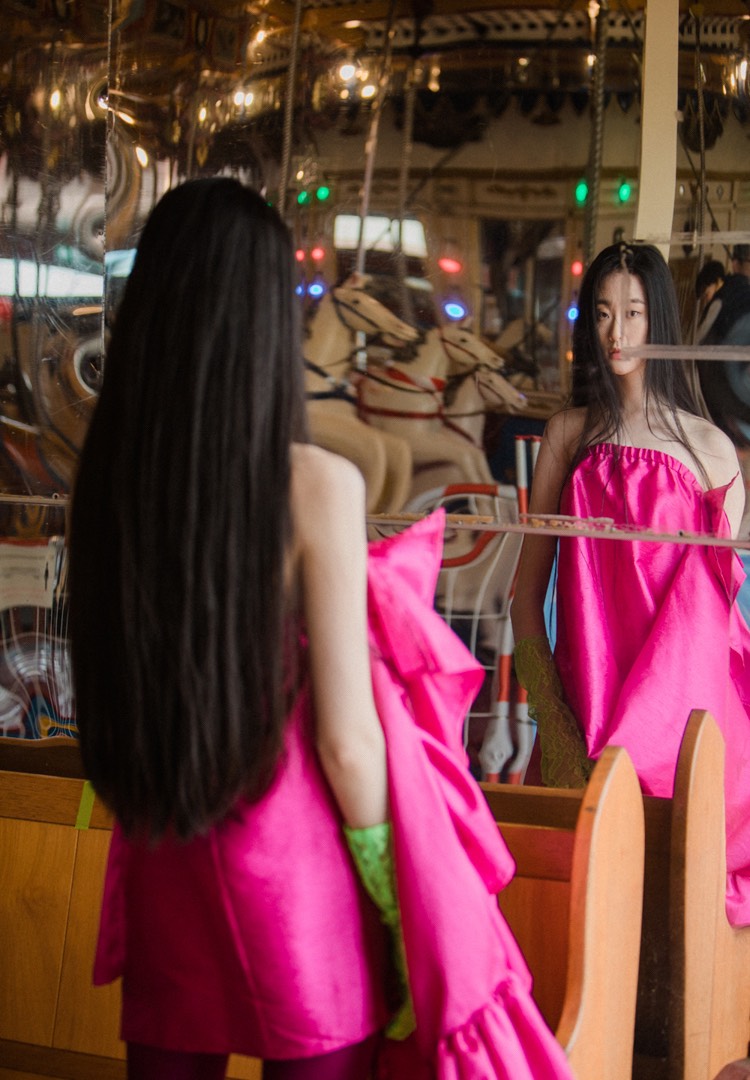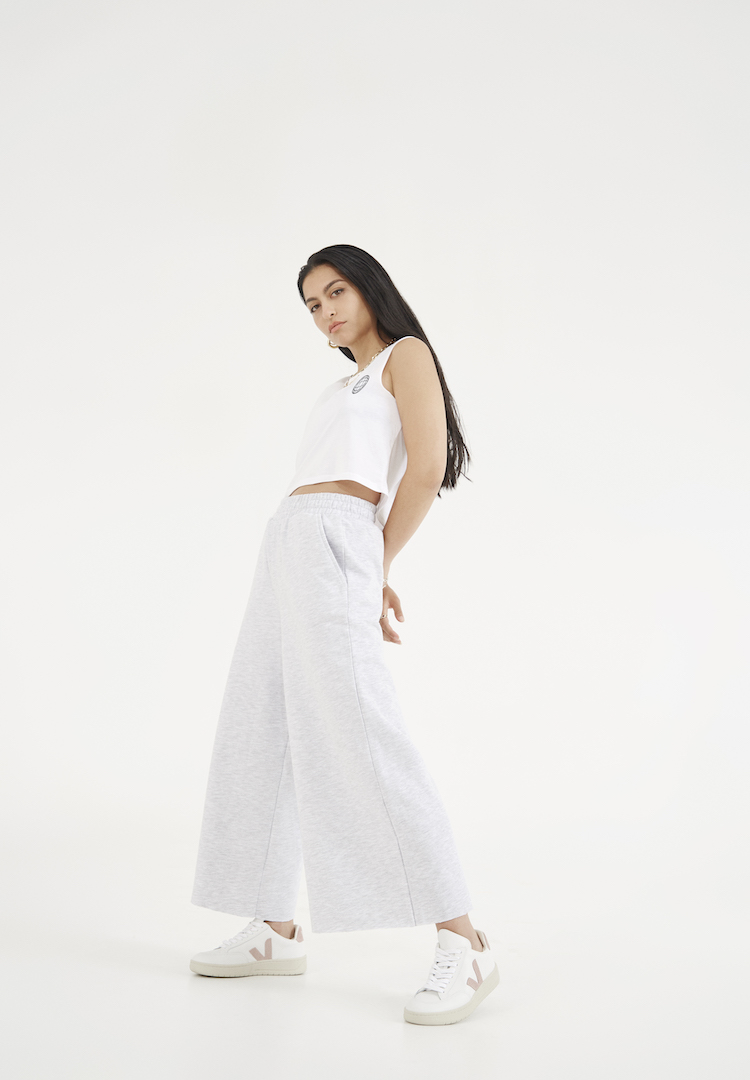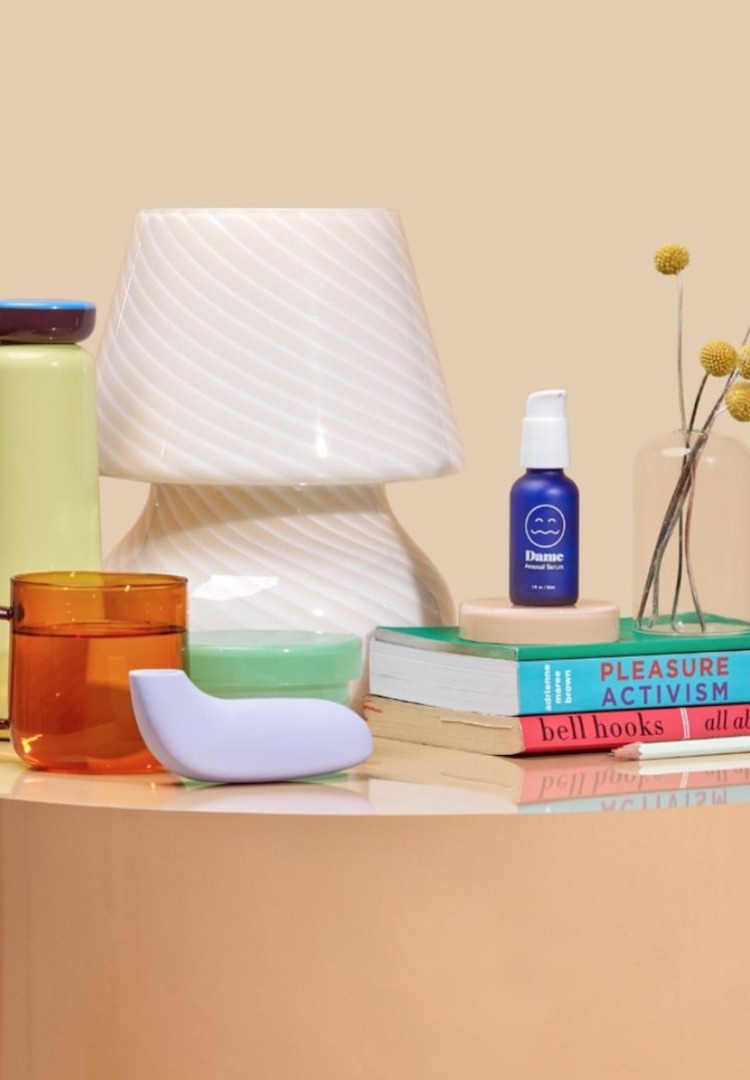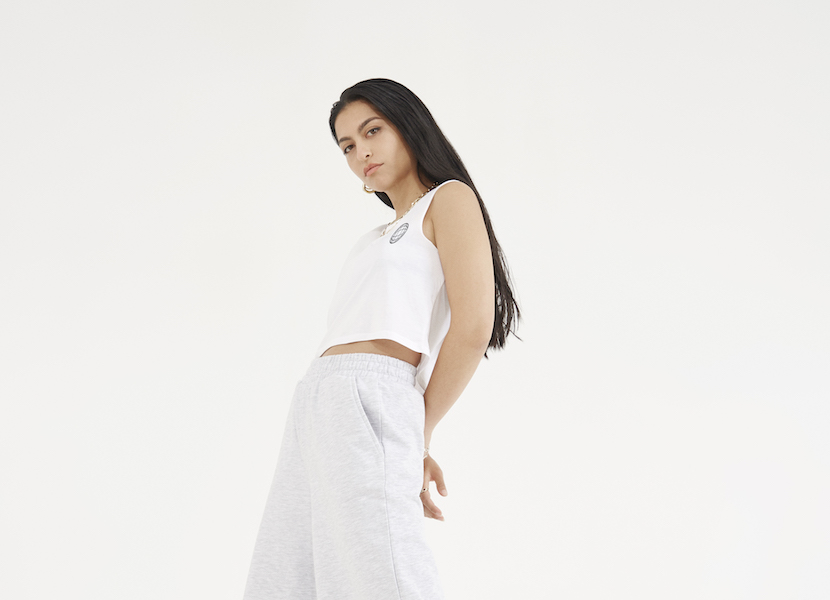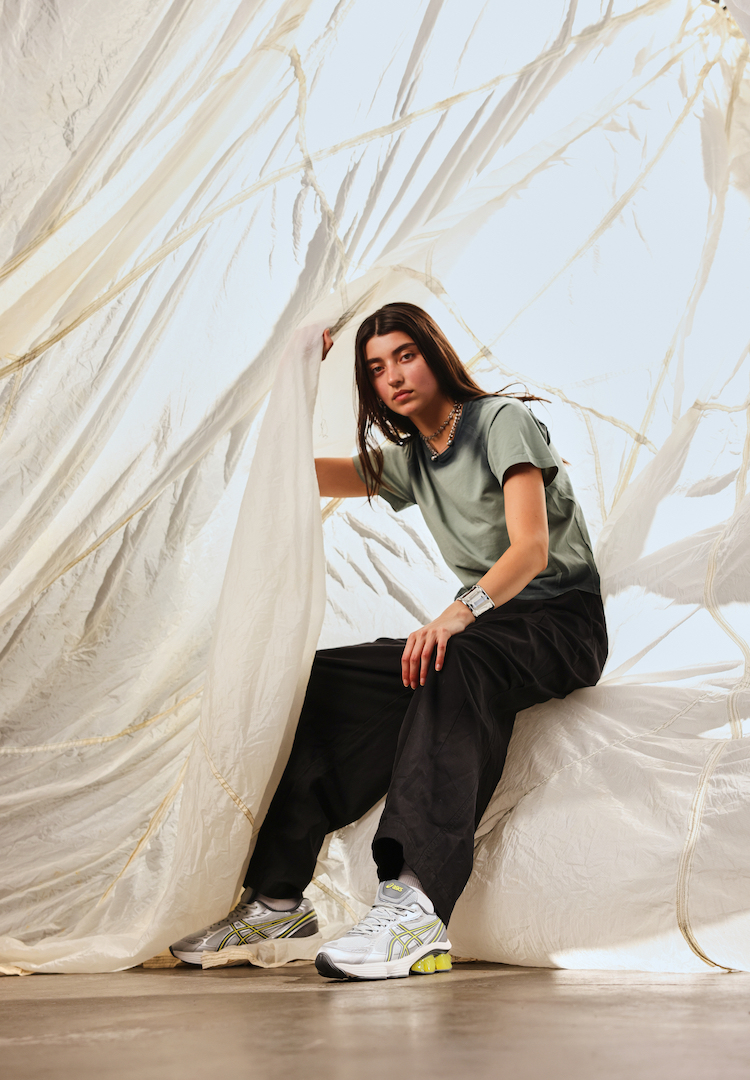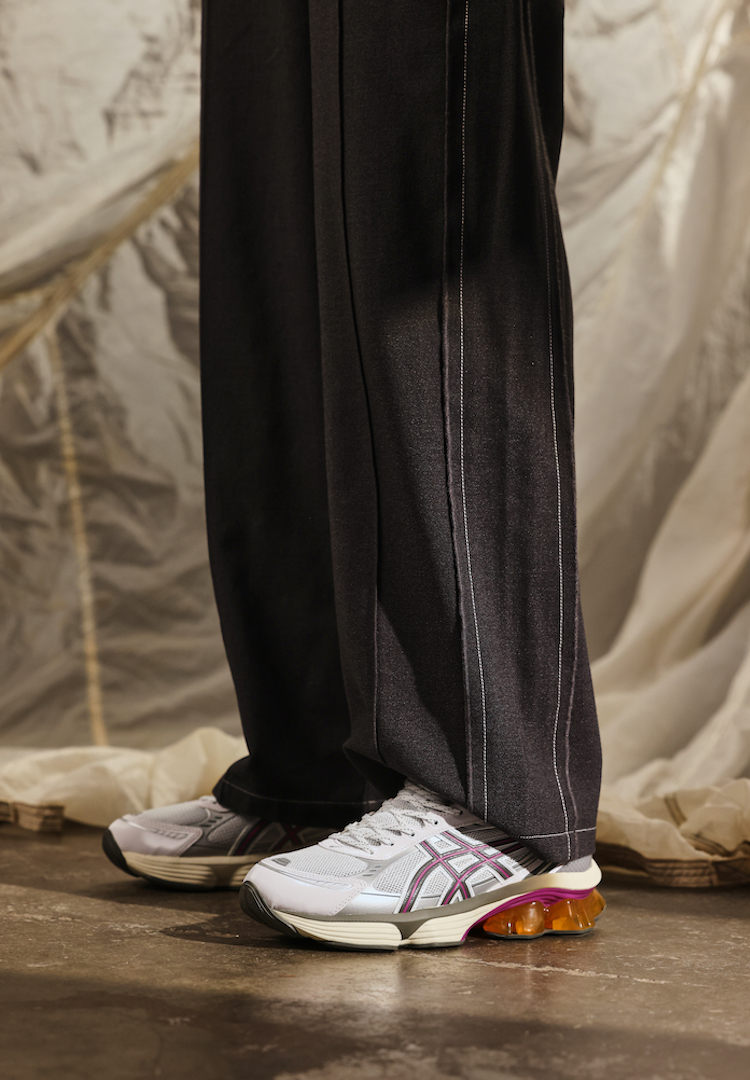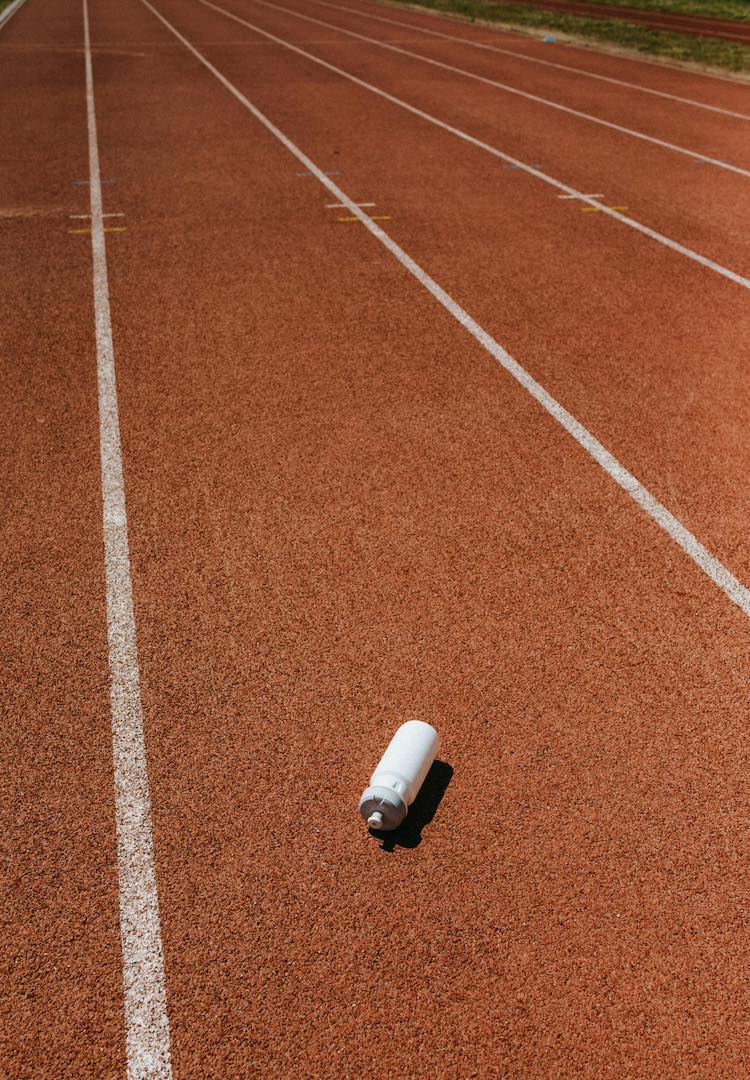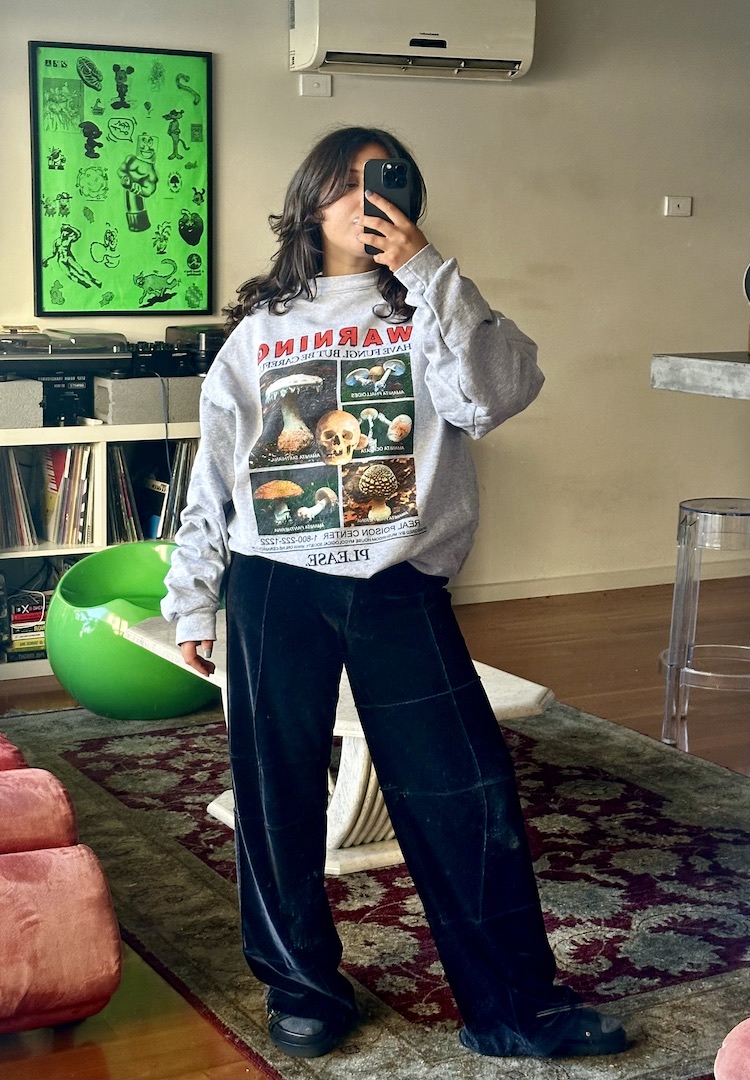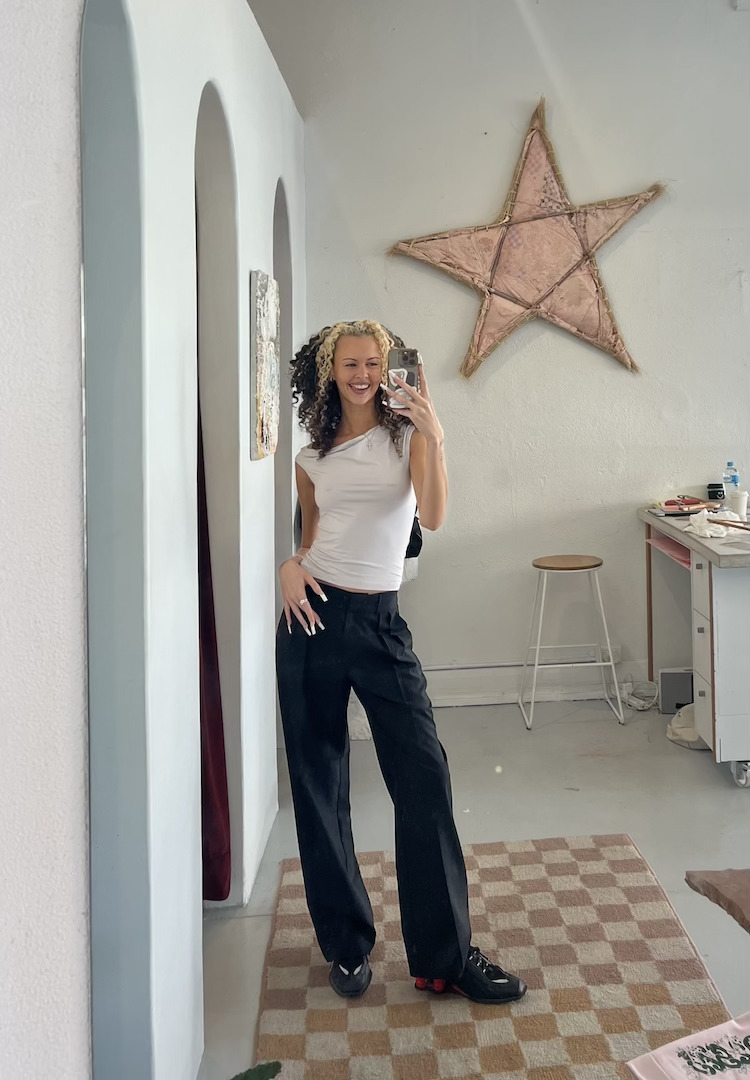Sydney-based photographer Yasmin Suteja on the influence of sneaker culture on her creative practice
WORDS BY ELIZA SHOLLY
“For me, sneakers evolved from being utility to being a declaration of the community you want to belong to.”
Like many terms coined in an attempt to compartmentalise multifaceted human beings, the word ‘slashie’ makes me cringe. The expression is – I guess – supposed to reference the oblique slanting punctuation line that represents (and separates) various purposes, most commonly in reference to people that have commodified their skillset to excel in more than just one thing.
If I am using that logic, then Yasmin Suteja is indeed a slashie. She is the brains behind Culture Machine, a creative studio and production company based in Sydney. The wider brand also helms a talent agency and warehouse studio, and sees its main woman, Yasmin, working as an ambassador for Hype DC’s Sneakerteller campaign, a curated collection of sneakers and stories that celebrates the impact of sneaker culture across Australia and New Zealand.
Looking for more on the future of Australian fashion? Pop over to our Fashion section and browse to your heart’s content.
Yasmin is alarmingly eloquent, particularly when discussing concepts within the realm of her lived experience. Read on for her musings on influencer culture, some early sneaker memories and the role of Hype DC in the broader social, cultural and economic landscape.
Could you describe your brand ethos? Why do you think Hype DC tapped you as an ambassador?
I think Hype DC was attracted to all the different avenues that come out of the hub that is Culture Machine. So much of the priority that I have had in the work that I do is about creating community in both a physical space, but also a greater community in the culture we have created in my business. One of the words used to describe me is ‘influencer’ but I know there is a lot more that I do, and I don’t think that is why people gravitate towards me. My story goes all the way back.
When I graduated from the University of Sydney at 21 I moved back to Bali which is where my dad is from. I started working over there, and even back then I was coordinating teams. Stylists, videographers, make-up artists – I just loved getting everyone together to collaborate. Because I’ve built my own thing I have such a great amount of autonomy, and I get a massive say in what and how I make things.
What are some of your earliest sneaker memories?
I actually credit Kath Ebbs as someone who was so integral in my style transition and sustainable fashion awareness. Kath was the first person to take me to a thrift store and used to encourage me to buy second-hand sneakers. I used to think that used shoes were where I drew the line, but I remember going to London and spotting a pair of orange Nike Blazer’s; they were a style that wasn’t being produced anymore, but they were perfect for my tiny size five foot.
So, not only was I taking the leap into second-hand footwear, but it was also with a pair of bright orange sneakers that you have to coordinate your outfits around. I ended up wearing them every day of our trip and finding ways to make clothes work with these statement shoes.
View this post on Instagram
How have you seen sneakers evolve into the mainstream in Australian fashion?
I distinctly remember Sydney Fashion Week, maybe four years ago? It was the first time I saw bloggers wearing long designer gowns in the front row, with sneakers. I was baffled. I found the high-low thing fascinating. I’ve also noticed a massive shift in people putting together their outfits – like [when] I was in London – around a central pair of statement shoes. For me, sneakers evolved from being utility to being a declaration of the community you want to belong to.
What do you think came first? The Culture Machine brand or the ‘influencing’?
The beginnings of Culture Machine coincided with the beginnings of influencer culture. What would become an ‘influencer’ started happening while I was in Bali. I in no way considered myself one. I was behind the scenes, photographing these people that would become some of Australia’s leading influencers. It was interesting to watch it all develop and getting a close insight into this massive new wave of content creation.
It really popped off for me when I moved back to Sydney into a share house in Bondi. We all became this little family of creators living in this house and I think that’s how a lot of people started to know about me – once again, as part of a group or community. Influencing kind of came concurrently with that. I was always conscious of my impact. Even now I’m still surprised at people who have lived my journey with me. It’s super humbling – sometimes a little frightening – that people can reference back to me as a 23-year-old.
Your platform seems to exist at the intersection of fashion and business. When you were growing up, was there anyone you were trying to emulate in that space?
My mum was a bit of a risk-taking entrepreneur. In her late fifties, she decided to pack up everything and open a cafe in Bali, despite having no experience in hospitality. I watched the beginnings of a business. From her getting a lease and renovating the space, to designing a menu and marketing the cafe through social media. I witnessed the bare-bones, particularly when the success of a business relies on word of mouth and social media. Mum never went down the path of traditional advertising, and all of the content for her cafe was user-generated. I found that whole process fascinating.
Mum also did everything people told her not to do, with so much confidence. She is a risk-taker. In a lot of ways, I have had to do the same, and be blindly optimistic. Part of being a trendsetter, or being someone that is ahead of the game, is about running your own race and not being affected by whatever is happening around you. Looking in front, not behind.
Do you think fashion can often hold up a mirror to what is happening in the broader social, cultural and economic landscape?
In a lot of ways, what we’re wearing is a reflection of the times. I actually think the return of thrift stores is a really interesting tangibility of this. It’s often thought that trends die in these spaces, but they’re also born here. One of the books that inspired me to start Culture Machine was Malcolm Gladwell’s Tipping Point, and in it, he compares social trends to epidemics and looks at the way they spread. One reference he made was to Hush Puppies, and how they started ending up in thrift stores when they were going out of date.
Low and behold, a group of Manhattan hipsters started buying and wearing them who didn’t follow top down trends, bringing Hush Puppies back into relevance. I find that super interesting, particularly when it comes to sneakers. A lot of what Hype DC does well is cottoning onto a revival and what is happening contextually, then using sneakers as a way to reflect what is going on right now.
What do you find yourself reaching for these days?
The Veja collaboration with Christine Phung is one of my favourites. I first started seeing some of my friends wearing the V-Lock sneakers and loving the look, as well as the fact that Veja is a sustainable and ethical brand. I also have a pretty heightened claustrophobia, which sometimes translates to a fear of wearing shoes with too many laces that I can’t easily slip off my feet. So Veja is a super ergonomic choice for me, too. Aside from that, Nike Shock and Air Max are definitely go-to styles as well.
Hype DC is celebrating the impact of sneaker culture in Australia and New Zealand by encouraging sneaker lovers to share their sneaker stories and memories – because everyone has their sneaker to tell. Head here to check out more Sneakerteller stories.

